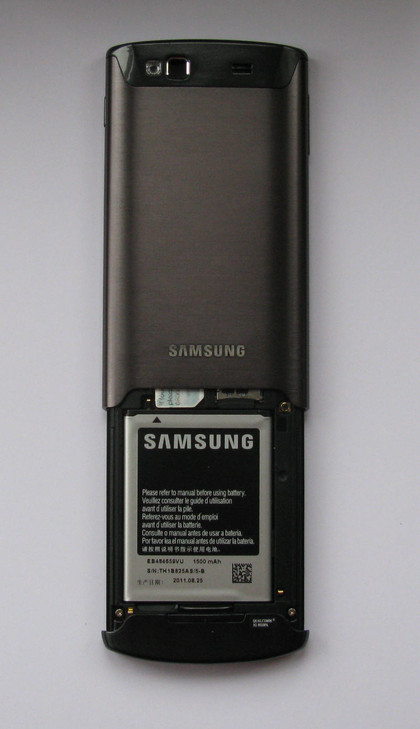TechRadar Verdict
A quality phone that is only, once again, let down by a slightly behind-the-times OS.
Pros
- +
Large, high quality screen
- +
Impressive processor speed
- +
Easy text input
- +
Good quality sound output
- +
Great hardware design
Cons
- -
No NFC support
- -
Problems with Flash
- -
App store still needs work
- -
Short on widgets
- -
Needs bigger battery
Why you can trust TechRadar
Samsung has become a dab hand at smartphones, with several operating systems on the go. It's a key player in the Android world, with the likes of the Samsung Galaxy S2 stealing plaudits all round, and the Nexus looking set to be a really popular buy too.
Samsung also plays ball with Microsoft, and its Omnia 7 has been updated by the Windows Phone 7.5 toting Omnia W. And we haven't even mentioned any of the popular Android tablets on Samsung's plate.
So what's with Bada, then? A third smartphone operating system, this one Samsung's very own, seen here on the Samsung Wave III S8600, seems like a bit of an anomaly in such a crowded market.
Well, Samsung wants to offer choice, and, importantly as far as Bada is concerned, its own software market too as well as a new group messaging service called ChatOn. And Bada itself isn't too shabby thanks to the TouchWiz UX user interface.
But would you opt for an operating system that's in just a few phones when you could go for one that's in lots of handsets from a range of manufacturers? One that you know well with thousands of apps on offer? Yes, we mean Android. Or one that's in just a couple of handsets, all from the same company, but which also has thousands of apps and a great rep? We mean iOS as found in the iPhone 4S, obviously.
Samsung has certainly pulled the stops out on the hardware front, making the Wave III look rather attractive. Where the Wave II from the front end of this year toted a 3.7-inch screen, here we have 4 inches of screen, 480 x 800 pixels and the fantastic, superbly bright and clear Sumer AMOLED technology. The screen's a dream.
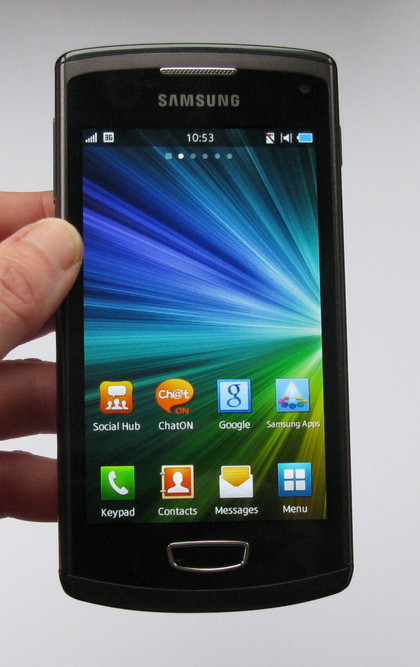
Under the screen there's a large Home button, and whenever you tap the screen Dial and End keys light up to its left and right. When the handset is in what Samsung calls 'idle mode', it's showing the home screen but not the lock screen, and the Dial key takes you to the call log.
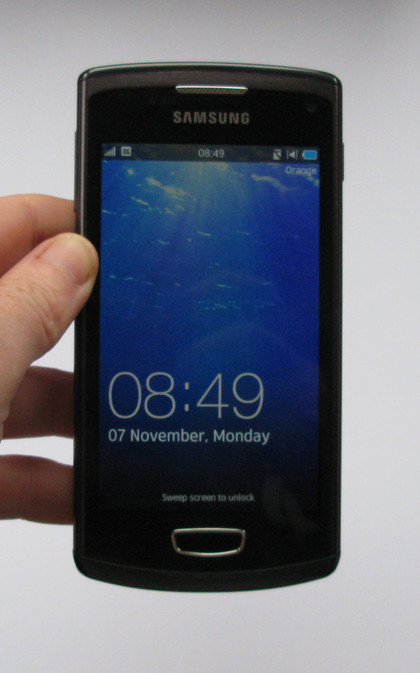
Atop the screen is a small front-facing VGA camera, while on the back you'll find the main 5 megapixel shooter with an LED flash. Side buttons are minimal. There's a volume rocker / camera zoom button on the left, and power button on the right.
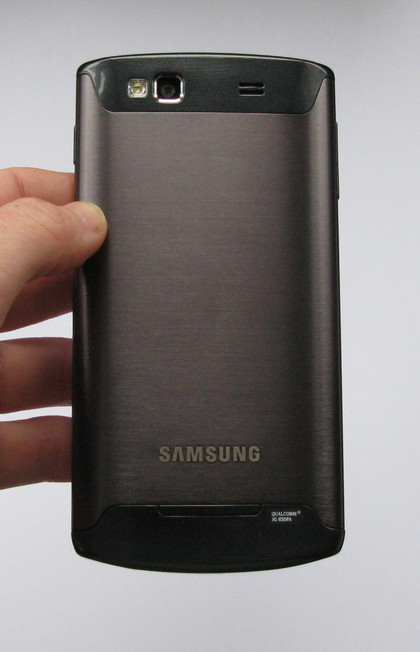
The top is clear, and on the bottom you'll find the micro USB connector and headset slot. We prefer the headset slot to be on the top of the chassis, but we'll forgive Samsung in this case as bottom mounting still lets us minimise pocket snagging. The connectors are far enough apart that they don't obscure each other if you have both in use at once, either.
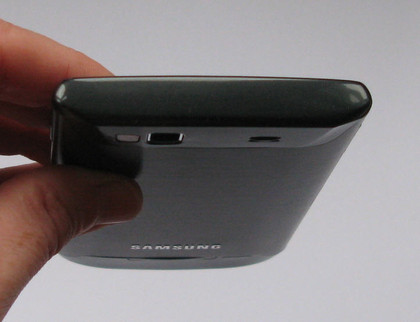
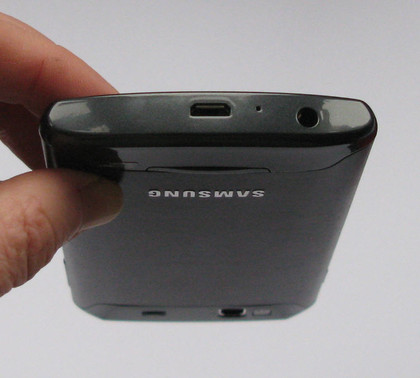
We love the chassis design. Yes it's big at 125.9 x 64.2 x 9.9 mm, and you'll have trouble reaching all the way across the screen one handed if your digits are small. But the thinness is a real plus point, and the metal unibody casing looks neat and feels solid. One interesting feature is that to get to the battery, SIM card slot and microSD card slot you press a hinge lock and then slide the unibody section upwards rather than removing a backplate.
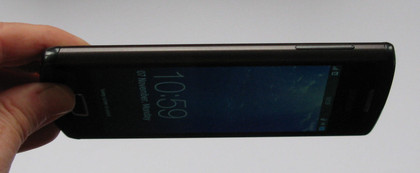
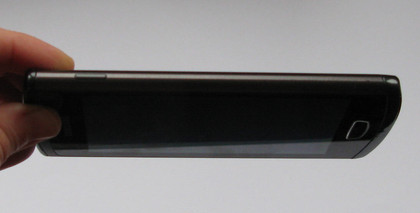
Internally the specs impress. There's a 1.4GHz processor and 4GB of internal storage, Wi-Fi, GPS, Bluetooth, 720P video recording. So far, so good, then. But we need to delve deeper.
